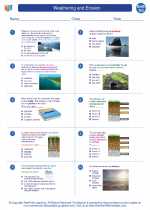Underground Aquifers
An underground aquifer is a natural underground reservoir of water. It is formed when water seeps into the ground and is stored in layers of porous rock, sand, or gravel, known as aquifers. Aquifers are essential sources of water for drinking, irrigation, and industrial processes.
Formation of Aquifers
Aquifers are formed through the process of infiltration, where precipitation or surface water percolates through the soil and accumulates in underground layers of permeable rock or sediment.
Types of Aquifers
There are two main types of aquifers: confined and unconfined. Confined aquifers are sandwiched between impermeable layers of rock, while unconfined aquifers are not confined by impermeable layers and are more vulnerable to contamination.
Characteristics of Aquifers
Some important characteristics of aquifers include porosity, which refers to the amount of pore space in the rock or sediment, and permeability, which describes the ability of water to flow through the aquifer.
Groundwater Flow
Water within aquifers moves through the process of groundwater flow. The flow direction is influenced by the slope of the water table and the permeability of the aquifer materials.
Study Guide
Here are some key points to remember when studying underground aquifers:
- Underground aquifers are natural reservoirs of water stored in porous rock, sand, or gravel.
- Aquifers are formed through the process of infiltration and are essential sources of water for various purposes.
- There are two main types of aquifers: confined and unconfined, each with different characteristics and vulnerabilities.
- Understanding the porosity and permeability of aquifers is crucial for assessing their water storage and flow capabilities.
- Groundwater flow within aquifers is influenced by the water table's slope and the permeability of the materials.
Remember to review the formation, types, characteristics, and flow of underground aquifers to gain a comprehensive understanding of this important natural resource.
[Underground Aquifers] Related Worksheets and Study Guides:
.◂Earth Science Worksheets and Study Guides High School. Weathering and Erosion

 Worksheet/Answer key
Worksheet/Answer key
 Worksheet/Answer key
Worksheet/Answer key
 Vocabulary/Answer key
Vocabulary/Answer key
 Vocabulary/Answer key
Vocabulary/Answer key
 Vocabulary/Answer key
Vocabulary/Answer key
